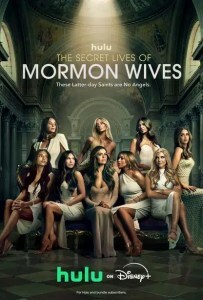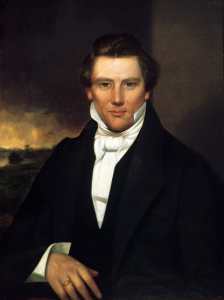Exponent II's Blog, page 2
November 23, 2025
The Complicated Realities of Missionary Service
 November 23, 2025 Michelle Bulsiewicz
November 23, 2025 Michelle BulsiewiczWith the recent announcement of lowering the age for sister missionaries to 18, it brought to mind a lot of complex emotions from my own mission more than a decade ago. I’m reposting this essay originally published in the At Last She Said It newsletter, considering what these young girls will have to face and how much inequality is still before them in the Mormon church.
As my faith has transitioned, so have my feelings about my mission to northeast Brazil. I have so many fond memories. I met so many wonderful people. I learned so much. But there’s also so much I regret. From almost the moment I came home I was plagued with feelings of guilt and inadequacy. Looking back, I can see how much it harmed my mental health, even as if changed me for the better in so many ways.
Like everything else, it’s complicated.

I wanted to go on a mission my whole life. Both my mom and maternal grandmother had served missions, and I wanted to be like them. Also, I was something of a born feminist and I hated that boys were expected to go but girls were just supposed to get married. I wanted to prove that I could do it too. I wanted God to be able to expect of me just as much as he could of any young man.
After experiencing the incredible difficulties that come with mission service, I almost immediately changed my tune once I came home. Now, I don’t think anyone should be required to go, boys or girls. It’s way too much to force on anyone who isn’t thrilled out of their minds to be there. Only one hundred percent enthusiasm and certainty of purpose can get anyone through the trials of that kind of experience.
I would like to preface everything else I’m going to say by stating that this reflects the circumstances of the time and place of my mission and my experiences in it. Not everyone will feel the same, not even people I served with.
With that said, here’s a list of the pros and cons of my missionary service:
Pro: It expanded my world. I was completely immersed in the language, culture, and experiences of people who lived very differently from me. I honestly think you could serve a mission in your hometown and you would still get at least some of this experience, because as a missionary you talk to everyone. Your tiny group of people you normally interact with who are usually from a similar background, education, and socioeconomic status as you is blown open and you are exposed to people from all walks of life. Getting thrown into a world where most people had little concept of how I’d grown up was so isolating and difficult at first, but in the end so worthwhile. Honestly, everyone should experience what that’s like to some degree. It connects you to everyone else in humanity.Pro: It matured me. I went on my mission a few years before they lowered the age limit the first time, so I was twenty-one and had already gone to college away from home for a few years. Still, I had been mostly sheltered all my life and BYU had not really prepared me for all that was out there. Serving in one of the most dangerous cities in the world definitely exposed me to a lot. But most of all, I had to learn a lot of emotional maturity. I had to learn how much it wasn’t about me. I had to expand my view so much wider to those around me than I ever had before. I had to learn about patience and growth and things not working out the way you wanted them to. This prepared me for adulthood in an intense, sped-up way not much else could have provided.Pro: It taught me how to handle difficult things. Like I said, I really hadn’t gone through very much before my mission. After my mission, I knew how to kill a mouse with a broom, get rid of head lice, live without running water for two weeks, face down a mugger, deal with the worst sides of all kinds of people—I could go on and on. Not everyone’s mission is this stressful, but I do think I needed these experiences. Now, no matter what emergency I’m faced with, I’m calm. I’ve dealt with worse. I know I can get through it.Con: It taught me to submit to leadership even when it contradicted my intuition. I wanted to be the most obedient, best sister missionary there was. In my mission, sisters had a reputation for being lazy and whiny. I never wanted to fall into that stereotype, though quite frankly oftentimes it was inevitable. Still, I tried so hard to be different, and because of this I tried to do everything my nineteen- to twenty-year-old leaders told me to do, even if it didn’t feel right to me at all. I ignored the fact that I knew and interacted with the people I was teaching, and they often did not. I ignored the fact that I had stewardship over these people and needed to follow my own intuition and revelation about what was right for them. Instead, I worried about pleasing the elders, often to the detriment of myself and those I taught. This is the number one thing I would go back and change if I could.Con: It taught me to value numbers and appearances over people and experiences. My mission in particular focused a lot on numbers. There’s a lot of talk out there in the teachings about missionary work about focusing on people instead of numbers—but my goodness is there a whole lot of focus on numbers. Elders in my mission were hounding me about them nearly every day. I will tell you many of them did not worry nearly so much about the people behind them, either the people we were teaching or me and my companion and how we were doing. It was all about why we didn’t teach enough lessons, didn’t have anyone coming to church, didn’t have anyone committed to baptism. Never mind that we had worked ourselves to the bone trying to make it happen. Never mind that the people we were working with had struggles and doubts and concerns that were not so simple to overcome. Never mind that maybe it was important for them to actually be converted and committed to a church before they joined it. They only wanted the number. I fell prey to this, because, again, I wanted to please my leaders. I know the people I taught could tell. I really feel like I failed them in this way.Con: It made me feel like a failure. Speaking of feeling like I failed—I do not have the ideal missionary personality. I’ve begun to suspect I have some neurodivergence in me, but I know for a fact I’m highly introverted, shy, anxious, and socially awkward. Jana Riess put it well in her book The Next Mormons, that certain personalities feel like they have to “foot bind” themselves to fit the mold of what a missionary is supposed to be. The result is a bundle of exhaustion and anxiety. The fact was, no matter how hard I tried, I was only able to be myself. I wish I would have practiced more acceptance of my strengths and weaknesses instead of trying to force myself to be someone else. But the environment of a mission can lead to a whole lot of comparison and self-flagellation and in a lot of ways I’m still coming to terms with this.I could go on. This only barely touched on the sexism inherent in missionary service in the LDS church. It was so blatant to me in the lack of leadership opportunities and training available to sisters. I know some things have improved thanks to lowering the age limit—but still much has not.
I can only imagine how much harder this whole experience would have been for me if I had gone straight out of high school. These new eighteen-year-old sisters are going to be in for a lot.
November 22, 2025
From the Blogger Group Chat: Sister Missionary Age Change
 November 23, 2025 Linda Hamilton
November 23, 2025 Linda HamiltonSharing some thoughts from our bloggers on the newly announced age change for young women to serve missions:
 Image from LDS Church Newsroom
Image from LDS Church NewsroomLinda Hamilton: I’m significantly more upset than I thought I’d be. 1. It feels like another crumb, since women will continue to serve less time and be restricted from mission leadership roles. 2. I don’t think 18 is a healthy age for missionary service for anyone. It feels like the main motivation is to indoctrinate youth into staying by getting them on missions, rather than allowing youth to develop into young adults with life experiences.
Kara Stevenson: It’s about time! But I still hate the pressure placed on young men. Saying that the Lord asks every young man to serve, instead of encouraging young men to discern what is best for themselves, isn’t okay.
Michelle Bulsiewicz: Now when will they actually have them serve for the same amount of time? When elders automatically get more experienced it makes a big difference in equality on the mission too.
M. Alva Nilsson: I’m glad to see greater equality! I think this sends an important message to young women that they are capable of what the Church thinks young men can do. Also though, I personally wish the age for men had been raised to 19 instead. In my interactions with some of these younger missionaries, I really get the impression that another year of working, college, or just life experience would be good! Some of them have not even been out of high school for a summer before they’re out living on their own trying to share the gospel! (Side note: if I hear one more missionary say: “I hadn’t read the Book of Mormon before my mission,” I am going to crash out. They went through the temple and committed to sharing this, but they don’t even know what it is???)
Candice Wendt: Yeah, I’m all for anything that moves toward equal opportunities for women, but I find no joy in thinking of 18 year old women (or men) being out in the mission field. The age 18 thing seems to just be an attempt to catch and commit them before they get adult life experience. What I really think should happen is a whole mission program rehaul. The approach is really out of date. Just this week someone I work with complained to me at length about LDS missionaries sometimes stopping him up to 4 times a day and showing no appreciation for the fact he is already happily religious and attending a church. He doesn’t want to be invited to another church that is supposedly more correct.
I think it should be a young adult internship starting at age 22 with options for the length of time. More humanitarian service focused, more focused on gaining a wider variety of life and work skills. No more church dress at non-church events. Free program with a stipend to help them pay for school, etc. More oriented toward gaining skills that will help them forge their lives. I don’t think it’s too worldly to want to redesign missions to help young people succeed in life and have a good start. I’ve grown to hate the mission program as it is.
Heidi Toth: I agree on all fronts–parity is good, but it would be better for everyone to have more life experience before going. It really does feel like a way to suck people in before they go off into the world and get corrupted. (Not really, but that’s my uncharitable interpretation.) I just remember being in the MTC and having a missionary ask how to do laundry. And people not having the emotional maturity or self-reliance to be able to handle what comes up. So many of these messages–go on a mission at 18! Get married young! Have kids young!–seems like an attempt to tie people to the church–to make it harder to separate yourself if you’re so inclined.
Candice: One of the reasons I’m so critical of the mission system now is I live in an unusually high-baptizing community. One reason for this is that Montreal is the place many immigrants and refugees first arrive to and start to make a life in Canada, so there are lots of vulnerable people looking for connections. I see that missionaries work their butts off baptizing people, and I also see that we retain very, very few of these people. Stake and missions don’t always work together well. Here we are quite mismatched: a low-bandwidth, not very socially connected, high needs ward cannot fellowship a high intake of new members effectively.
I’ve grown very critical of the idea that we should prioritize conversion and baptisms, getting others to believe and think like us. Effective conversations that connect us meaningfully with others come through accepting others as they are and learning from diverse perspectives, not through seeking conformity. I’m concerned the conversion focus reflects emotion and spiritual immaturity. As I look back at the times I was involved in missionary work, I had ulterior, self-gratifying motives. Yeah, I did have a genuine desire to help people. But I also wanted my worldview validated. I wanted to see for myself that someone could be convinced. I needed to pad my own fragile ego and hide from my doubts.
The idea that we need to help save people spiritually has very problematic facets: it’s too heavy a burden, it puffs our egos, and it’s questionable how spiritual the endeavor really is. What people might need more than a sense of expected afterlife outcomes is connection with God and transformation now. The afterlife focus is a distraction from things that are more directly helpful.
Bailey: AAAHHHHHH! I’m screaming into the void about this. I find the comments on the church’s Instagram page frustrating because of a lack of recognition of who made the age policy to begin with. There are many comments along the lines of ‘the Lord is hastening the work’ when people don’t realize that it was men who made the age policy decisions and chose not to treat women equally with men from the beginning.
I agree with others’ concerns about 18 being too young overall especially if someone hasn’t had prior experience traveling or living away from parents. As a parent of a young adult and a teen and also as a high school psychology teacher, I have grown increasingly concerned over the last number of years watching teens leave on missions. Many missionaries that I know have returned early due to a variety of concerns, many of which are related to mental health and safety. If the church insists on allowing 18-year-olds to be missionaries, then changes to the program are sorely needed to make it a more positive and developmentally appropriate experience. As others have mentioned, I agree that humanitarian focused missions would likely provide a better experience for all involved.
Even without making badly needed structural changes to missions, one specific beneficial change that can be made immediately is the number of hours of sleep that missionaries are allowed. My psychology students are finishing a unit on the Teen Brain which is a unit students love because it’s all about how their brains change during adolescence. One favorite topic in this unit is sleep. The recommended amount of sleep for adolescents is 8-10 hours per night. Yes, those 18-year-old missionaries could need 10 hours of sleep a night. 19-year-olds are in a transitional time and many need more than 8 hours of sleep, especially while under the stress. While some could get by on a minimum of 8 hours, the schedule needs to allow for those who need 10 hours. (I know I could not function on the minimum of 7 hours of the 7-9 that are recommended for an adult; I need 8 to 8.5.) Brain development during this time is critically important and sleep supports that development. Additionally, sleep plays a role in processing and regulating emotions. Allowing missionaries to get biologically necessary sleep could provide a protective factor for mental health. As a parent, I am relieved that my young adult chose not to serve a mission because I do not trust the church to have young adults’ needs in mind.
Rose: With the number of missionaries who are returning early due to mental and physical health issues, I am strongly opposed to young men or young women going on missions when they are 18. They need at last a year of maturity either through school, work experience, or both to face the rigors of a mission. The expectation (and social and religious pressure) on 17-year-olds sending in papers for a mission when they are in high school is unacceptable.
Ann: My first reaction was “oh good, now the girls can have trauma from going too early, just like the boys.”
I’m trying to picture myself as a senior in highschool hearing this news.
18 year old me would probably have been thrilled! I didn’t have to have plans for college or a job out of high school. I could go on a mission and make my parents so proud. I wouldn’t have to worry about permanently breaking up with my boyfriend after high school. We could go on missions and get home at roughly the same time and then get married. (At 20 yay!) I’m not sure what I would have thought about going through the temple at 18, but if all my friends were going before their missions then I would probably just go along with the crowd.
In my life I went to college after high school. I moved out and went to school 2.5 hours away. I learned to differentiate from my parents. I did break up with that boyfriend and it was AWFUL but necessary. And I really chose the church instead of doing the next thing expected of me.
When I think about it, a mission kind of feels like an extension of childhood. I know there is hard work and rules and discouragement. But if an 18 year old goes on a mission right out of high school did they really have to put a lot of choice into that decision? Especially if they come from a devout family? It’s not like picking a college where you pick a school you think will work for you. It’s just turning in your papers and trusting the decision someone else makes for you.
I don’t know, maybe I’d think differently if I had served a mission. But that’s my perspective.
The whole thing feels icky.
Caroline: Like Candice, I’m guessing that one important reason for this change is that the church is losing a significant number of young women when they graduate from high school. If they can get girls on missions right away after graduation — girls that might otherwise decide to not go to RS/church when they go off to college or embark on their adult life — they have a better chance of retaining them long term. So I’d put my money on retention being a primary motivator for the change.
Trudy: I was really excited to read the news that women will be permitted to serve missions at the same age as men. I served a mission back when the age was 21, and if I had been able to serve at 18, my life might have turned out for the better. I had to interrupt my education to serve a mission in a way that going right out of high school wouldn’t have interrupted it. My interruption wasn’t as bad as some, since I went between college and law school, but I think I would have taken the full 4 years in college rather than powering through in three if I had been able to go earlier.
I think that allowing women to serve missions earlier will create more parity in future marriages because recently returned male missionaries will be more likely to date women their own age rather than pursuing teenage recent high school graduates.
#metoo and she was only three
 November 22, 2025 mimi
November 22, 2025 mimiAuthor’s Note: I wrote this blogpost in March of 2025. I didn’t post it because it felt too raw and personal at the time to post. I didn’t think I’d be able to deal with any comments that anyone left. It’s now been a lot of time. I still think about this whole thing quite a bit. It still hurts. But I’m also doing way better now. Now that I’m in a better headspace, I want to share in case others are going through similar things. There is power in community and I want to acknowledge that. I also want to be part of the healing community. I’m sharing exactly as I wrote it in March when my feelings were raw. Please be gentle/supportive in the comments with me and with anyone who writes.
“As a community, we create a lot of space for fighting and pushing back, but not enough for connecting and healing.” -Tarana Burke, founder of the #metoo movement
In July of last year I moved into a new ward with a strong prayer in my heart that I would find community in the new ward. Miraculously, I found community that I hadn’t felt at church for years. It felt beautiful.
On February 2nd, we had a family from our ward over for dessert and had a great time. On February 6th, one of the teenagers in the household disclosed that he had pulled down my then three year old daughter’s pants and touched her labia while they were at our house.
In other words, my baby girl was sexually assaulted in my own house by a member of the community that I had really grown to love.
The past month has been full of appointments with the pediatrician, phone calls with the Department of Human Services, phone calls trying to find therapists for my family, email exchanges with the bishop to discuss his plans for ensuring safety and our plans to leave the ward, correspondence with the new bishop to tell him why we’re coming, text messages from friends who are supportive, phone calls with loved ones. And lots and lots of tears. Lots of tears.
The thing is that my little one is probably fine. The pediatrician said it’s likely she might not even know what happened given that we wipe her when she goes to the bathroom and she still wears a diaper at night. We had her fourth birthday party last week and it was beautiful to celebrate her and see her joy and happiness.
But just because she seems fine and likely doesn’t know what happened does not mean we don’t know what happened.
It doesn’t mean I don’t feel violated. It doesn’t mean I don’t feel hurt. It doesn’t mean I don’t worry on a whole new level how to keep my kids safe.
It does mean that I am forever changed. It does mean that I am going to have a hard time trusting again. It does mean that my heart has no interest in finding community in the ward that we’re having our records transferred to.
Because the perpetrator was a minor, we are hoping to keep his identity private. That means that we told our older kids some of the details, but not all of them. They know that a person from our ward pulled down their little sister’s pants and touched her labia. They don’t know any more details than that.
But that’s enough to shake them. That’s enough to make them cry. That’s enough to make them scared to go to church (even in our new ward in a new building).
My 11 year old has another year of primary left, but will be leaving primary now in favor of using the “buddy system” and will attend Young Women’s with her sister. I have mixed feelings about that. On the one hand, I don’t want to force her to grow up sooner than she needs to. But on the other hand, she’s being forced to grow up sooner than she needs to because of what happened to our family. I’d rather let her feel empowered to make a choice about what she wants to do to feel safe (even if it means breaking a norm or a rule) than tell her she has to follow said norms or rules. This is a life lesson that I hope she takes with her. Perhaps a silver lining to this whole awful situation.
My 13 year old is a social kid. She’s already asked if that particular family can come over again (reminder: we did not tell her who did it because we’re trying to protect the minor’s privacy). We sidestepped the issue. But she’s going to be confused at our sudden strictness in certain areas. I will be very vigilant in what I allow that kid to do moving forward.
We probably won’t allow the (now) 4 year old to go to primary alone for years to come. She’s so shy and doesn’t talk to people. We worry this makes her more vulnerable as outsiders may think she doesn’t know how to communicate. I don’t want anyone else taking advantage of her.
My husband and I haven’t had sex since this happened. I have no interest in engaging in something that can also be used as a weapon.
I finally found a therapist to help me verbally process this whole mess.
******Photo by Alex Plesovskich on Unsplash
November 21, 2025
The Proper Mountain Woman Club
 November 21, 2025 Melissa Tyler
November 21, 2025 Melissa TylerI have been fighting apathy. There are many things that concern me, that I have been angry over, I have voted on, spoke up about, and taught my children.
But when what I have tried to change doesn’t work, or worked towards produces little…I feel apathetic about engaging.
I however have found some healing through a fun little club of sorts. Started by two woman who have tapped into something that has lifted my spirits and connected me again to people in my life that I had distanced myself from because of differing political and religious views.
It has started to help heal our relationships.
The Proper Mountain Woman Club
This is an online club that sends you a booklet (unless you opt for the online book) full of fun, silly, challenging, and inspirational challenges for you to work on in order to obtain virtual merit badges. Once you have obtained so many virtual ones, you obtain a physical merit badge or patch.
I love it.
Perhaps it is because I never got my chance to earn merit badges as a kid. I went to many of my brothers’ cub scout and boy scout meetings, but wasn’t allowed to partake. My dad always took my brothers on a week-long scout trip over my birthday every year, but I wasn’t allowed to go.
Or maybe it’s my inner desire to get credit for all the things I do? Whatever the reason, it is breathing life into a heart and into relationships that have needed some fresh air.
I actually have spent my life as a mom taking my three girls camping, hiking, adventuring, etc. I was even their Girl Scout leader. But this is something for me (even though I actually rope my kids into doing some of the challenges).
Here are the digital badges I earned this summer:

Here are the physical Badges I earned as well:

The patch I love the most is my mushroom one. It represents the time I spent learning about foraging for mushrooms. I even learned that the mushrooms growing in my yard were safe to eat and ate them for three weeks, as my lawn kept surprising me with them!!



There are seasonal sessions you can join. You decide how much or how little you do. Every season is different and the badges you earn are never the same. Here is where you can learn more if you are interested.
I am currently working toward my “Silly goose” patch while my mother is working on her “Wise owl” one for the Fall session.
We could all use a little fun and a pat on the back when we do it. All ages welcome…they even have a separate club for your kiddos. All self paced, all just for fun.
Enjoy!
November 20, 2025
Merry Christmas to all Come Follow Me teachers, Ward Music Chairs, Primary Leaders, Activities Committees, and anyone with LDS Christmas content on their wish list
 November 20, 2025 April Young-Bennett
November 20, 2025 April Young-BennettAre you in charge of the musical Christmas Sacrament Meeting program this year? Or the Ward Christmas party? Or the Primary Children’s Nativity? Teaching a Come Follow Me class or giving a Sacrament Meeting talk during the Christmas season? Whatever your calling may be, we have a resource to help you get the work done and still have time left over to relax and sip your eggnog beside the Christmas tree!
Table of ContentsCome Follow Me Christmas Lesson PlansChristmas Sacrament Meeting ProgramsPrimary Children’s Nativity and Christmas ActivitiesLatter-day Saint Ward Christmas PartyChristmas Sacrament Meeting Talks#LightTheWorld contentFind more holiday content in our archive!Come Follow Me Christmas Lesson PlansCome Follow Me: Christmas, an invitation to come unto Christ
Come Follow Me: Christmas or Matthew 1; Luke 1 “Be It unto Me according to Thy Word”
Come Follow Me: Christmas The Birth of Jesus Christ: “Good Tidings of Great Joy”
Come Follow Me: Christmas with the women of the NativityChristmas Sacrament Meeting Programs
How to Write the Best Christmas Program Ever: A Complete Guide
A Christmas Sacrament Meeting
A Christmas Sacrament Meeting, the SequelPrimary Children’s Nativity and Christmas Activities
Children’s Nativity Script
Christmas Series: Primary Nativity Program
Picturing Women in the NativityLatter-day Saint Ward Christmas Party
Christmas Series: The Best Ward Christmas Party EverChristmas Sacrament Meeting Talks
Christmas Series: The Parable of the Nativity
The Heavenly Host’s Challenge: Peace on Earth#LightTheWorld content
Merry Christmas from Exponent!Find more holiday content in our archive!
Find Christmas essays, poetry, devotionals, podcasts, theology and more in the Exponent Christmas archive.

November 19, 2025
The Secret Lives of Mormon Wives (Hulu): Reactions, Reviews, and Mormon Feminist Takes
 November 19, 2025 Katie Ludlow Rich
November 19, 2025 Katie Ludlow RichThe Secret Lives of Mormon Wives (SLOMW) Season 3 dropped on November 13, and fans are indulging in what has become our semi-annual conference—ahem—binge-watching ritual. The Hulu reality series has become a global phenomenon that raises big questions about Mormonism, gender, sexuality, and influencer culture.
What Is The Secret Lives of Mormon Wives About?
If you aren’t familiar, The Secret Lives of Mormon Wives is a reality-TV series streaming on Hulu that follows a circle of Utah-based #MomTok influencers as they navigate friendship, faith, family life, and social-media fame in the wake of MomTok founder Taylor Frankie Paul’s “soft-swinging” scandal.
What Do Mormon Feminists Think About the Show?
Ahead of Season 3, I joined Liz Johnson, Caroline Kline, and Daniel Foster Smith on the Dialogue: A Journal of Mormon Thought podcast to unpack the series. We asked: Is this show merely voyeuristic entertainment, or does it genuinely engage with questions of faith, gender, and modernity? What do the cast members mean when they talk about “fighting the patriarchy”? And where does the show fit within the broader waves of Mormon feminism?
👉 Listen to or watch our full conversation.
Mormon Feminist Reflections from Exponent II
At Exponent II, several writers have already explored how the show mirrors—and distorts—the experiences of Mormon women:
Linda Hamilton argues that Mikayla and Jace’s storyline on SLOMW reveals how Mormon patriarchy—through early grooming, sexual shame, and unequal marital expectations—creates trauma dynamics that the show fails to acknowledge. Linda Hamilton discusses Layla’s confession that she hasn’t orgasmed with a partner and reflects on why many Mormon women struggle to experience sexual pleasure. Abby Maxwell Hansen contrasts outrage over SLOMW with the church’s veneration of nineteenth-century male leaders who took underage wives, arguing that modern viewers should be far more disturbed by that history of coercive polygamy than by adult women’s consensual choices today. Heidi describes how a casual girls’ night turned into an unexpected mirror for her own faith journey—revealing parallels between the reality-TV wives’ search for autonomy and her own struggles with boundaries, rebellion, and letting go of Mormon expectations. Rebecca Lucero Jones writes that SLOMW reflects the sexual pressures and contradictions within modern Mormon culture, showing one of many ways women “Mormon” today. Kate Loyd argues that the show reduces Mormon womanhood to shallow stereotypes, overlooking the faith, complexity, and quiet strength of everyday Latter-day Saint women.More Mormon Voices Not to Miss
Here are six other thoughtful reactions from Mormons (and ex-Mormons):
Jana Riess at Religion News Service writes why she can’t dismiss the show as simply vacuous or dismiss the women as not Mormon enough. Exponent II blogger Amy joins Rosanna on The Salty Housewife Podcast to discuss how accurately SLOMW portrays LDS women’s lives, where it hits the mark, and where it falls short—especially around family, marriage, and faith. Historian Benjamin Park argues that the hit Hulu series isn’t just entertainment—it’s the culmination of decades-long cultural shifts within the LDS Church and broader American society.On her Substack Matriarchal Blessing, Celeste M. Davis writes, “Shhh…the real secret of the lives of Mormon wives is… internalized misogyny.” Hayley Rawle from Girlscamp Podcast gives an ex-Mormon take on Season 2. John Dehlin at Mormon Stories has hosted several discussions about the show, including one with Chelsea Homer, Alyssa Witbeck, and Natasha Helfer that dives into Mormon sexual development and ethical non-monogamy.Why These Conversations Matter
Whether you watch The Secret Lives of Mormon Wives as a guilty pleasure or out of anxiety of how it depicts Mormonism, the show exposes more than influencer drama—it reveals the impossible double bind still shaping Mormon womanhood: the demand to be both submissive homemaker and flawless sex symbol, loyal wife and scapegoat for men’s failings. Beneath the glossy surface and “saints versus sinners” framing are glimpses of women wrestling with purity culture, internalized misogyny, and the judgment of what it means to be “Mormon” enough.
Will you be watching Season 3? Discuss in the comments!
“Secret Lives” Puts Mormon Sexual Inequality on Display
 November 19, 2025 Linda Hamilton
November 19, 2025 Linda Hamilton**Content Warning for sexual assault and childhood abuse**
If you don’t watch The Secret Lives of Mormon Wives, here’s a quick synopsis of some of this season’s drama. A major storyline revolves around Mikayla and her husband, Jace. Mikayla opens up on screen about her trauma as a childhood sexual assault survivor, including doing therapy sessions and attempting to open up more about what happened. Jace, meanwhile, is frustrated with their sex life struggles from Mikayla’s triggers. He wants connection and intimacy, and she feels constant guilt for not wanting to be sexual or putting out. The storytelling suggests they are getting closer and working on these issues, but I see some major Mormon red flags not being addressed, at least not on camera.
 Mikayla Matthews and Jace Terry of Secret Lives of Mormon Wives. Image from people.com
Mikayla Matthews and Jace Terry of Secret Lives of Mormon Wives. Image from people.comThere are powerful messages brought to light from Mikayla’s storyline and I appreciate her openness about her experiences. Shining more light on childhood abuse can help survivors and prevent future abuse. My goal for this article is to expose the patriarchal systems that infiltrate Mormon culture and doctrine, not to judge or condemn the couple themselves. I do very honestly wish the best for them as individuals and a family. I use their public sharing of their story to point out patterns that exist in the “secret lives” of many Mormon wives across the spectrum.
Mikayla’s storyline in the show this season leaves out an important piece of this couple’s story–one laced with patriarchy and Mormonism. In a previous season, Mikayla explained that she moved out of her family home at age 15 to live with her sister. She met Jace through her sister’s connections. He was 21 years old. Within a month of knowing him, she was pregnant at 16. She dropped out of high school. They were married in 2018, a few months after the birth of their first child. She recently had their fourth child.
A 21 year old is an adult. A 16 year old is a child. The age of consent in Utah is 18, but so-called “Romeo and Juliet laws” allow minors at least 16 years old to consent with adults up to 10 years older. So technically under Utah’s law, this relationship would not be statutory rape unless Mikayla did not consent to it. According to internet gossip, the pair hooked up at a party and Jace didn’t know she was 16 at the time. Unless the pair choose to share more, we can’t speculate on the level of consent between the two, whether alcohol was involved, etc. But we can acknowledge that there are icky things about the foundation of this relationship that the show continually glosses over. Things that echo through many LDS-based relationships.
Mikayla is a victim of abuse and her childhood was stolen from her. My heart breaks for everything she had to endure at such a young age. Then as a teen, her young adulthood was taken from her by pregnancy and teen marriage. There is a real power imbalance between a young, traumatized teen and an adult man. I’m skeptical that situation can present space for true consent. Her parents did nothing to protect her from her childhood abuser, so Jace must’ve felt like a savior. He’ll forever be the “good guy” because he stepped up, making her continually ingratiated to him. This kind of dynamic can often lead to abuse or imbalanced relationships.
We also can’t leave out the strong pressure from Mormonism on women and girls who are pregnant and unmarried. How many LDS women have been coerced or heavily indoctrinated into marrying men solely because they were pregnant? Mikayla admits she barely knew Jace when they decided to be together for the baby. How many women also find themselves pregnant after a one-night stand and then feel they must be with the baby’s daddy to repent or be a good person? Latter-day Saints are so obsessed with perceptions that they will heavily pressure women to marry even their abusers in order to “clean up the mess” and force an eternal family.
I doubt Mikayla was ever truly told her options and choices around sexuality. She most likely didn’t have easy access to birth control. She’d probably never been taught anything but abstinence. Latter-day Saint lessons, both in church and with most families, about sex are shame-filled, focusing on sin rather than information and options. Public schools in Utah are abstinence-only too. So where would she even get better information about her body and her choices if she wanted it? Patriarchal gender roles also teach girls like Mikayla to never have an abortion.
Jace was harmed by patriarchal gender roles too. He surely heard countless lessons and lectures on being the provider, the protector, the patriarch. He’d probably been told that if he ever “screwed up” he would need to marry her because that’s the right thing to do. He might have thought that was the only option. YM leaders most likely gave him weird lessons that one day his wife will magically fulfill all his sexual fantasies. (My husband, brother, and various friends attest to this happening frequently.) How can years of this kind of indoctrination not warp perceptions and choices?
Though Jace should have known better as an adult, I doubt any man ever told him to worry about a girl’s age. LDS men from polygamy to the present day marry women underage or pursue them without issue until they are legal. A respected leader once told my husband as a teen to “check out the primary girls because that’s where his wife was when he was on a mission.” While he was trying to make a joke about their age gap, this is unacceptable to tell an impressionable kid. Recently in my ward, a man bore his testimony about meeting his wife when he was her high school band teacher. I came to my bishop’s office afterwards extremely upset and was told it wasn’t a big deal because their marriage “worked out.”
Neither probably learned about proper consent. Mental health issues are routinely shoved under the rug or painted as the result of sin. Mikayla says she had no support for her trauma and may have made very different choices with relationships if she had real tools to help her.
Now on the show seven years later, Mikayla and Jace appear to have a decent relationship and to love each other. But the body keeps score. Mikayla struggles with sexual intimacy. She says this is due to her sexual trauma. While the official storyline focuses on her young childhood abuse as the cause, I think 16 year old Mikayla is also a part of that trauma. She was taken advantage of by an adult man, even if legally what they did was fine. She then forced a relationship with that man, giving up her childhood to marry him and be a wife and mother. I’m not a mental health expert, but I think it’s fair to suggest the possibility that Mikayla feels that projecting into her current sexual relationship with her husband. As much as he may love her, Jace is a part of her sexual trauma. But that never once comes up (on camera at least) in the therapy sessions they film.
Even without a relationship start as extreme as Mikayla and Jace, I think many Mormon men are part of their wives’ sexual trauma. But we never bring that up as a possibility in the church. From horrible wedding nights to lifetimes of purity culture messing teens up, I would wager a lot of LDS women (and men) have sexual trauma. And sadly, at least some of the trauma is probably interlinked with the man or woman they love very much. But when sex is a sin next to murder and purity is paramount over death, it will not be easy for most of us to decipher that truth and heal from it.
On the show after only one EMDR session, Mikayla’s therapist suggests they stop that and switch to couple’s sex therapy. Again, I’m not a mental health professional but that just doesn’t sit right. Instead of helping Mikayla heal herself, she needs to go back to finding a fix to satisfy her husband? This sounds like advice to uphold patriarchal marriage, not individual well-being. It’s giving “men have needs and wives must fulfill them” BS.
But this is also Latter-day Saint womanhood 101–you exist to satisfy your husband’s sexual needs. It’s YW leaders ingraining in teen age girls that boys can’t control themselves and that they must control his sexual thoughts and actions. It’s Relief Society sisters telling engaged women that you won’t want to have sex but you’ll need to just endure it anyways. It’s temple matrons explaining to new brides that they should never say no because they need to support their priesthood holder. It’s “your husband cheated on you? Well, were you putting on lipstick and trying to look nice for him?” It’s freaking canonized in our scriptures in D&C 132, for heaven’s sakes!
Mormon patriarchy inherently makes women sexual objects that exist to satisfy men and grow their eternal kingdoms. A woman’s worth is her womb, her obedience to male hierarchy, and her invisible labor to keep the church and family running. If women were truly equal in the LDS church, we would be able to measure it in equal positions in the church structure. We would see it in doctrine, scriptures, lesson manuals, policies, priesthood authority, and the temple. There would be no men “presiding” in our marriage covenants or “traditional” gender roles.
Mikayla and Jace demonstrate this inherent sexual inequality in Mormon culture and doctrine, even if not intentionally. It does not appear they’re strictly orthodox now, but they grew up steeped in patriarchy and it spills out everywhere in their content and on the show. Mikayla expresses so much guilt for her inability to meet her husband’s sexual needs because she was trained as a Mormon girl both consciously and subconsciously that it’s her duty to satisfy him. Jace feels that he cannot connect with his wife unless they’re having regular sex. Even as he acknowledges and shares understanding for his wife’s trauma, he continues to maintain that he needs sex or maybe they should separate.
Jace is presented as a “good guy” in the show’s storyline but I can’t stop seeing the Mormon man that demands his needs above his wife’s struggles. Mikayla falls in line with patriarchal marriage by focusing her healing journey on his needs and her guilt. Therapists (who are also probably Mormon) back up this belief of a patriarchal relationship by opting for couple’s sex therapy over individual help for Mikayla. This suggests that getting Jace sex as fast as possible is most important. She’s given little to no tools to help her trauma. Jace further believes the key is she must open up more to him by revealing details of her trauma that she states she doesn’t feel ready to share. While I think there is good advice in the practice of vulnerability and openness in a marriage, each partner should do so as they feel comfortable, not be pressured to do so. It also seems to be once again centering Jace in issue, making his desire to have her confide in him more important than her own healing path.
I see Mikayla (and in ways Jace as well) as the victim of an abusive system that set her up to struggle. She not only endured childhood abuse, she lost her youth to ingrained social rules that maintain patriarchal power structures. Her body is keeping the score of not only her childhood, but her teenage and young adult years of pregnancies and marriage that also uphold patriarchal relationships and prioritize male needs. If I were her, I probably wouldn’t want to sleep with my husband either. I truly wish the best for her and her husband, but I hope she can find peace for herself, not just for satisfying her husband. I hope that for all Mormon women holding onto these kinds of “secret lives.”
November 18, 2025
Guest Post: Release the Joseph Smith Files
 November 18, 2025 Guest Post
November 18, 2025 Guest PostBy Kelsey Sorenson
Whether the title of this essay piques your curiosity, fires you up to join a rally cry, or makes your chest tighten, stay with me. That feeling is information.
As a certified life coach, I know that different people can read the same words and feel completely different things. Our beliefs, our lived experiences, and our sense of identity all shape how close or how threatening something feels. When what we love is touched, our nervous system reacts long before our logic does.
And when it comes to anything involving Joseph Smith or the Church, many members feel that reaction as danger. In high-demand religions, identity and belief get woven together so tightly that questioning history can feel like questioning yourself… your family, your salvation, your place in the community.
And as I talk about in my book, Maslow’s Hierarchy of Needs reminds us that love and belonging are basic human needs, right after food and shelter. True belonging is different from simply “fitting in,” as Exponent blogger Bailey explains so beautifully. But within the church, many of us subconsiously learn maintain harmony by not asking certain questions or engaging with information that feels disruptive to the familiar narrative. So anything that even seems like a threat to identity or community is going to make the nervous system throw up a red flag.
So yes… this might feel close to home. So before we go into something that feels close to home, let’s step back for a moment and look at a situation where our nervous systems don’t have as much skin in the game. Something most Americans actually agree on:
We want the Epstein files released.
Across political lines, religious lines, and ideological divides, millions of us are united in our demand for transparency. Why? Because we instinctively understand that power and secrecy are a dangerous combination, especially when vulnerable young people are involved. We want to know what happened. We want to know who was involved. We want accountability.
We agree that when powerful men exploit women and girls or hide abuse, we want transparency. We demand it in government, in corporations, in Hollywood.
We don’t want someone else deciding which facts we’re allowed to see. We want the full picture so we can form our own conclusions.
And yet, when that same instinct for truth points toward our own religious history, many people freeze (which can be an actual trauma or stress response). The principle is the same, but the proximity changes the feeling.
To be clear: I am not equating Joseph Smith with Jeffrey Epstein as identical men. What I’m looking at are patterns… the ones that make Americans demand transparency in one case but avoid it in the other.
Our brains are meaning-making machines. So as I listened to people talk about Epstein this week… while also knowing that D&C 132 was coming up in Sunday School… I couldn’t help but notice some parallels between the Epstein files and the historical records of Joseph Smith’s (and other early leaders’) practice of polygamy. Patterns like:
The official Come, Follow Me Doctrine & Covenants manual for this past week- tiled “I Have Seen Your Sacrifices in Obedience”, presents plural marriage as a “severe trial of faith,” a “sacrifice in obedience,” and a “commandment from God” intended to inspire us in our own difficult choices. It frames Joseph, Emma, and early Saints as courageous examples.
But when you look beyond the manual, church history tells a much fuller (and far more complicated) story that many everyday members never encounter.
So when I say “The Joseph Smith Files” in the title of this essay, I don’t mean there’s a literal folder sitting on someone’s desk waiting to be declassified. The information is available… in the Joseph Smith Papers, in the work of both member and non-member historians, and in curated, tucked-away corners of the Church’s website. But most everyday members have no idea what’s actually in those sources, or how incomplete the official story still remains.
How many members sitting in the pews know that some of Joseph’s plural relationships involved girls as young as fourteen, with letters warning that their family’s salvation depended on saying yes? (source)
How many know that Emma was not Joseph’s first wife—or his fifth, tenth, but roughly his twentieth? By 1843, the Joseph Smith Papers estimate he had entered about 25 confidential plural unions, many occurring before D&C 132 was dictated and before Emma was sealed to him in May. The exact number is unknown due to secrecy, but it’s clear many sealings happened prior to Emma’s.
How many members know that the Partridge sisters… teenagers living in the Smith home to help with household duties… were sealed to Joseph in secret, and then sealed again in a staged ceremony so Emma would think she was witnessing it for the first time? (source)
How many know that Joseph was sealed to women who were already married to faithful men? Zina Huntington had married Henry Jacobs and was expecting their first child when Joseph sealed her on October 27, 1841. She did not continue to live with Henry (this was not merely a spiritual union) and Joseph effectively removed her from her marriage while Henry was away on a mission.(source)
How many know that the Nauvoo Expositor (the newspaper that printed these uncomfortable truths) was destroyed under Joseph’s direction, leading directly to his arrest? (source) Not merely for “persecution for righteousness,” as many of us were taught growing up…but an attempt to prevent the release of uncomfortable information. (See the connection to today’s headlines?)
And on the macro level in the church community, we’re still avoiding uncomfortable information, even in our manuals. But these details aren’t anti-Mormon. They’re part of the historical record, cited in many sources such as:
And yes, they appear (in softened, curated form) in the Church’s own Gospel Topics Essays and Saints volumes.
The information exists.
Why, even in 2025, do our Sunday School lessons still frame it as nothing more than a “trial of faith” that Joseph “struggled with,” when the historical record tells a far more complicated story? One that, if I’m honest, does not line up with the kind of God I want to believe in… a God whose love doesn’t require secrecy, coercion, or the suffering of girls and women.
And I think that’s exactly why we don’t talk about it. Some members often justify avoiding hard topics by saying we should only “focus on the good.” But I think that’s part of a deeper culture the church encourages. As Boyd K. Packer allegedly said (according to D. Michael Quinn recounting a previous conversation), “I have a hard time with historians because they idolize the truth. The truth is not uplifting; it destroys.” (link)
Yet as this lesson on honesty from the church states, “Honest people will recognize Satan’s temptations and will speak the whole truth, even if it seems to be to their disadvantage.” Can the church follow its own teaching? Isn’t the whole truth the point?
We want the truth.
We expect the truth.
We demand the full truth…. most of the time.
But the Epstein Files show how we apply logic consistently in some cases, but differently when it comes to Joseph.
We don’t say, “Focus on the good Epstein did.”
We don’t say, “Epstein wasn’t perfect.”
We don’t say, “Give Brother Epstein a break.”
We don’t call his victims’ abuse “a trial of faith.”
So while we won’t do that for Epsein, many of us do if the man in question is Joseph Smith.
And that’s why I’m calling this essay “Release the Joseph Smith Files.”
Not because a literal file is sitting on someone’s desk waiting to be unsealed (like current events).
But because the full story should be accessible, taught, and known… not tucked into footnotes, softened in essays, framed as a “sacrifice of obedience” as it was in this week’s Come Follow Me lesson, or framed in ways that bury the pain of the women at the center of it.
So let’s release the Joseph Smith Files. Release the fear of looking at history and the idea that the truth can’t be handled. Release the shame of asking questions or needing predetermined answers. Release the belief that authentic spirituality only exists in the LDS Church. Release the pressure for everyone to reach the same conclusion, recognizing that people can learn this information and choose to stay in the Church or step away.
In fact, there are many faithful members who learn this information and choose to stay, while being honest about (here’s one example of an honest middle ground when it comes to understanding Joseph Smith’s polygamy).
In the end, truth doesn’t divide us. Silence, pretending, and fear do. We can choose something better. We can hold different beliefs, different conclusions, and different spiritual paths… and hold space for each other’s differences.
But no matter the choice, the truth should matter to all of us. Love, belonging, and community are strongest when built on honesty, not illusion. If we embraced the full truth, the pews could become spaces where people feel safe to belong, even when they don’t agree on everything.
Maybe the story isn’t “the Church is true” or “the Church is false.” Maybe it’s that we’re still learning to be honest with what is. And if we can meet each other in that honesty, no matter where we land in our faith, we can meet without fear… just humans, telling the truth, doing our best.
Kelsey Sorenson is a wife and mom of three, a certified life coach, and the author behind Educate & Rejuvenate. She currently contributes to the website at Exponent II. Kelsey enjoys yoga, Coke Zero, and listening to Taylor Swift.

Submit a guest post! Learn more about our post guidelines and use the submission form on our guest post submission page.
November 17, 2025
Women’s Sexuality is Ignored in Mormon Polygamy
 November 17, 2025 Abby Maxwell Hansen
November 17, 2025 Abby Maxwell HansenWomen’s sexuality is almost always erased in our modern day discussions about early church polygamy. We center everything on the man and his sex life. We talk about all the sex he’s having, yet we never talk about the lack of sex the women are having.
There’s been a resurgence of discussion about polygamous men’s sex lives this week in connection with the D & C 132 (polygamy) lessons happening at church. Apologists for polygamy are quick to minimize the sexual component of these marriages in order to prove that Joseph Smith didn’t just invent the practice to satisfy his lust. They point out the lack of biological children through Joseph Smith’s plural wives as evidence that his sexual relationships with his wives (other than with Emma) were very minimal.
Are we really going to view the lack of sexual activity with a man’s polygamous wives as a good thing? I mean sure, for the men involved in polygamy it’s not a big deal to not sleep with any particular spouse very often – they had other sexual partners they could spend their time with. Women in polygamy were not allowed the same privilege. Their sexuality belonged to one single man – a man who could choose to never have sex with them while still having his own sexual needs fulfilled with other women.
Would we ever talk about this scenario the same way in reverse? Imagine saying, “This 20-year-old young man is a virgin, and he just got married yesterday to his eternal companion. Don’t worry though – he’ll only have to have sex with her one time. They’ll be married for the next six decades and then for eternity, but the sex part will only happen one single time!” (Additionally, his wife has thirty-five other husbands she will also have sex with. This is proof she doesn’t care about sex!)
Remember, none of Joseph Smith’s wives knew he was going to be killed at a young age and they’d be free to remarry and start families with a new man. When a young woman agreed to become Joseph Smith’s wife, she was agreeing to be exclusively committed to him forever. (The exceptions being his polyandrous wives.) As far as she knew, she was entering into the only sexual relationship she would ever be allowed to have, and it was with a man who she might only sleep with once. Becoming an eternal wife of a prophet meant committing to a life without a romantic connection with anyone else, ever again.
Growing up LDS in the nineties I heard many times that I (as the girl) was the guardian of virtue, and it was my job to make sure young men didn’t do anything sexually that would keep them from serving a mission.
I remember a fireside during high school where the speaker encouraged the girls to step up and demand that the boys they date obey the law of chastity. He explained, “Here’s a secret girls – the boys won’t like you more if you’re willing to break the law of chastity with them. Sure, they might think you’re fun to be with that night, but they won’t like you in the long run. A girl who doesn’t respect herself enough to insist on waiting for marriage isn’t the type of girl a young man will fall in love with and want as his eternal companion.”
I thought to myself, “Huh? If I ever have premarital sex it’s not going to be to make a boy like me. It’s going to be because I want to have sex really bad and mess up.” In retrospect, I wonder – did that adult man not know anything about teenage girls? They want to have sex too, just like the teenage boys do.
It’s the same mentality of this fireside speaker from the nineties that I see in the polygamy discourse today. It assumes women and girls do not have sexual desire like men and boys do. Teaching that Joseph Smith not having sex with his (adult) wives makes him a saint is a wildly uninformed point of view. If anything, these polygamous men shouldn’t be marrying more women than they can satisfy sexually. (And only one single time, on their wedding night – is not enough.)
Main image from Caroline Hernandez on unsplash.com
November 16, 2025
Your Garment Questions Matter
 November 16, 2025 Nancy Ross
November 16, 2025 Nancy RossJessica Finnigan, Larissa Kanno Kindred and I are excited to announce that our book Mormon Garments: Sacred and Secret will be published by the University of Illinois Press on February 24, 2026. It is now available for pre-order.

The book is based on a large survey of Mormons (4,500+) and their experiences with their garments. Among other questions, we asked people questions like: What do your garments mean to you? Why do you wear garments? How does wearing garments make you feel? We had hoped to get 500 responses, but were blown away when more than 4,500 people took our survey in just one week. We’ve spent the last 11 years understanding what all of that data means.
Every time I have presented on this topic, people have asked questions and shared their own stories of garments wearing. I wasn’t the kind of person who talked with strangers about their underwear before this project began, but it feels almost normal now.
I recently spoke with the new Dialogue: A Journal of Mormon Thought editors Caroline Kline and Margaret Olsen Hemming, together with Kristine Haglund, about the recent garment changes.
In the lead up to publication, I hope to answer some of your questions about people’s experiences with garments and garment history. So hit me up. What have you always wanted to know about garments?



